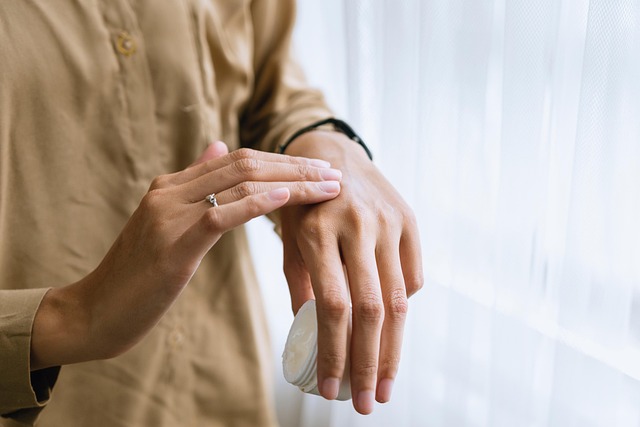The Art and Science of Skincare Layering
Skincare layering has become a cornerstone of modern beauty routines, transforming the way we approach our daily regimens. This meticulous practice involves applying various products in a specific order to maximize their effectiveness and achieve optimal skin health. The concept has roots in traditional Asian beauty rituals but has gained global popularity in recent years, thanks to the rise of social media and the increasing sophistication of skincare formulations. As consumers become more educated about ingredients and their benefits, the art of layering has evolved into a complex science, blending ancient wisdom with cutting-edge dermatological research. This approach to skincare not only promises enhanced results but also offers a personalized and mindful ritual that many find both therapeutic and empowering.

In the Western world, skincare layering began to gain traction in the late 20th century as global beauty trends started to merge. The introduction of Asian beauty products and philosophies to Western markets in the 1990s and early 2000s sparked a revolution in how consumers approached their skincare routines. This cultural exchange led to a fusion of Eastern and Western skincare practices, giving birth to the modern concept of skincare layering as we know it today.
The Science Behind the Layers
At its core, skincare layering is based on the principle that products should be applied from thinnest to thickest consistency. This order ensures that each product can penetrate the skin effectively without being hindered by heavier formulations. The science behind this approach lies in the molecular structure of skincare ingredients and how they interact with the skin’s layers.
Water-based products, such as toners and essences, have smaller molecular structures that can easily penetrate the skin’s outer layer. These are typically applied first to hydrate and prep the skin for subsequent products. Oil-based products and moisturizers, with their larger molecules, are applied later to seal in the hydration and active ingredients from previous steps.
Moreover, the pH levels of products play a crucial role in the layering process. The skin’s natural pH is slightly acidic, typically ranging from 4.5 to 6.5. Products are often formulated to work within this range, and applying them in the correct order helps maintain the skin’s optimal pH balance, which is essential for its barrier function and overall health.
Key Steps in a Layered Skincare Routine
While the number of steps in a layered skincare routine can vary, there are several key components that form the foundation of most regimens:
-
Cleansing: This initial step removes impurities, makeup, and excess oil, preparing the skin for subsequent products.
-
Toning: Toners help balance the skin’s pH and provide a first layer of hydration.
-
Essence or Serum: These concentrated formulations deliver active ingredients deep into the skin.
-
Eye Cream: Specialized products for the delicate eye area are often applied at this stage.
-
Moisturizer: This step locks in hydration and reinforces the skin barrier.
-
Sunscreen (AM routine): Protecting the skin from UV damage is crucial in any skincare regimen.
Additional steps may include exfoliation, face masks, facial oils, and targeted treatments for specific skin concerns. The key is to tailor the routine to individual skin types and needs, understanding that more products don’t necessarily equate to better results.
Customizing Layering for Different Skin Types
One of the most significant advantages of skincare layering is its adaptability to various skin types and concerns. For oily or acne-prone skin, a routine might focus on lightweight, non-comedogenic products and include targeted treatments with ingredients like salicylic acid or niacinamide. Dry skin types may benefit from multiple hydrating layers, incorporating hyaluronic acid serums and rich moisturizers.
Sensitive skin requires a more cautious approach, often with fewer steps and gentle, fragrance-free formulations. Those with combination skin might employ different products on various areas of the face, addressing oiliness in the T-zone while providing extra hydration to drier areas.
For aging skin, a layered routine might emphasize products with antioxidants, peptides, and retinoids to address fine lines, loss of firmness, and uneven skin tone. The key is to listen to your skin’s needs and adjust the routine accordingly, which may change with seasons, stress levels, or hormonal fluctuations.
The Role of Active Ingredients in Layering
Understanding how different active ingredients interact is crucial for effective skincare layering. Some ingredients work synergistically, enhancing each other’s benefits, while others may neutralize or irritate when combined improperly.
For instance, vitamin C and ferulic acid are often paired in serums due to their complementary antioxidant properties. However, using retinoids and alpha-hydroxy acids (AHAs) together can lead to irritation for some skin types. Similarly, niacinamide and vitamin C were once thought to be incompatible, but recent research suggests they can be used together effectively when formulated properly.
Layering also allows for the strategic use of active ingredients at different times of day. For example, antioxidants like vitamin C are often recommended for morning use to protect against environmental stressors, while retinoids are typically applied at night due to their photosensitizing effects.
The Psychological Benefits of Skincare Layering
Beyond its physical effects, skincare layering has psychological benefits that contribute to its popularity. The ritual of applying multiple products can be a form of self-care, providing a moment of mindfulness in busy daily routines. This process allows individuals to connect with their skin, fostering a greater awareness of its needs and changes over time.
Moreover, the act of layering skincare products can be empowering, giving users a sense of control over their skin’s health and appearance. As people become more knowledgeable about ingredients and their effects, they feel more confident in their ability to address specific skin concerns.
The tactile experience of applying different textures and the sensory pleasure of various scents (in fragrance-free formulations) can also contribute to stress reduction and improved mood. This mind-skin connection highlights the holistic nature of skincare layering, addressing both physical and emotional well-being.
Challenges and Criticisms of Skincare Layering
While skincare layering has gained widespread popularity, it is not without its critics. Some dermatologists argue that complex routines may be unnecessary and potentially harmful, leading to over-exfoliation or irritation from using too many active ingredients. There’s also concern that extensive routines may create unrealistic expectations and contribute to “skincare fatigue” or obsession.
Environmental concerns have been raised about the increased consumption of skincare products and packaging waste associated with multi-step routines. This has led to a growing interest in “skinimalism” – a movement towards simplified skincare that focuses on fewer, multifunctional products.
Additionally, the financial aspect of maintaining an elaborate skincare routine can be prohibitive for many, raising questions about accessibility and the pressure to conform to beauty standards.
The Future of Skincare Layering
As our understanding of skin biology and product formulation advances, the future of skincare layering looks to be both high-tech and personalized. Emerging technologies like AI-powered skin analysis and custom-blended formulations promise to tailor routines to individual needs with unprecedented precision.
There’s also a growing interest in “skincare wardrobing” – the practice of having a variety of products to mix and match based on daily skin needs, rather than adhering to a fixed routine. This approach acknowledges the dynamic nature of skin and allows for greater flexibility in addressing changing concerns.
Sustainability is likely to play a significant role in shaping future skincare layering practices. We may see a rise in multifunctional products, refillable packaging, and waterless formulations that align with eco-conscious consumer values while still delivering effective results.
As the skincare industry continues to evolve, the art and science of layering will undoubtedly adapt, balancing the desire for efficacy with the need for simplicity and sustainability. What remains constant is the fundamental goal: achieving healthy, radiant skin through thoughtful and informed care.



